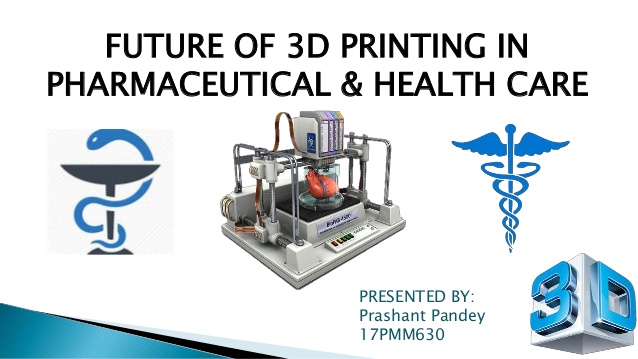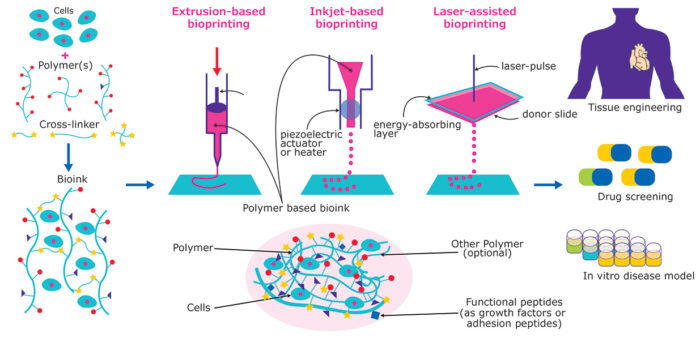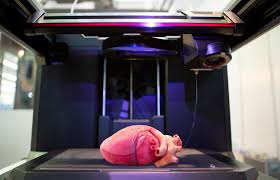3D printing human organs can bring the inconceivable to the table, while breaking boundaries in medical innovation. Worldwide, thousands of people wait for an organ to save their life. However, only 1% of hospital deaths become viable donors for an organ candidate. In Canada alone, about 4,500 people anticipate an organ transplant.
Bioprinting is the process of extracting cells or taking a skin biopsy from an individual and fabricating those cells into organs. Researchers are currently proceeding with the process of maturing cell material and running it through a bioprinter (Wnuk, P.). Bioprinting is, fairly and impartially, a new subject. Experts are still progressing by researching and running trials on patients.
Despite the research being relatively modern, related trials on patients have established vital results. Professor Anthony Atala from Wake Forest University in North Carolina conducted a study on a group of young adolescents. This case study analyzed patients that suffered from poor bladder functions due to mutations present from birth. The trial was achieved by extracting a biopsy of the non-functioning bladder and allowing the cells to cure in a specially adapted nutrient for a few weeks. Once the cells were adapted, researchers fused them into a mold. After an entirety of eight weeks, the patient’s bladder was fully-functioning and cured. Affirming results generated by this relatively experimental technology heralds new options for organ donations in the healthcare industry, “We have shown that regenerative medicine may one day be a solution to the shortage of donor organs for those needing transplants.” Professor Atala pronounced. (Williams, Prof. David Franklyn).
The Wake Forest University Institute for Regenerative Medicine created twenty-two different types of tissues using bioprinting, plus various types of biodegradable molds (Engelhaupt, E.). This attracted public attention to the possibilities that bioprinting can facilitate. From printing a functional ear, to even more crucial organs, this technology could transform an individual’s life entirely. A variety of consumer product companies are currently working on this medical innovation alongside scientific think tanks. L’Oreal, one of the best known skincare corporations, partnered up with Organovo—a research lab that specializes in the printing of tissues and organs. This institution has developed various techniques to print tissues and organs through their bioprinter. L’Oreal anticipates that the partnership will print skin using the printers to “extract dollops of skin into nickel-sized petri-dishes”(Rhodes, M). Both companies are hoping to achieve transformative opportunities for burn victims, and to test skin products on the printed tissue.
This innovation can also completely change how we study human anatomy. Scientists can use functional bioprinted organs to test drugs, including chemotherapy agents. Currently, scientists utilize animals for trials in different case studies. Aside from animal cruelty, the main problem with this is that the metabolic processes and biology of animals and humans are not exactly the same. There is a high chance, over 90%, that any results of animal testing that proved to be effective will not work on humans. This can result in dangerous consequences and even mortality (Aysha Akhtar, M).

One may wonder whether or not the continued performance of bioprinting is assured in the future. In medicine, proceeding to develop body parts outside of the body is proving to be feasible, and the point of regenerative medicine is to vindicate that claim. 3D printing organs is especially encouraging to patients because since the cells are extracted from the patient’s own body, [the new organ] cannot be repudiated (Williams, Prof. David Franklyn). Skeptics may believe that organ-printing technology is bizarre science fiction. However, increasing success with this science fictional medical technology is what will determine the future of regenerating organ cells In this highly unusual way.
Sources
1. Engelhaupt, E. (2018, February 20). “Scientists Use 3-D Printers to Make Body Parts” Retrieved September 19, 2020, from https://www.nationalgeographic.com/magazine/2018/03/explore-wellness-3D-printing-body-parts/
2. Aysha Akhtar, M. (2017, December 07). “The Top 3 Ways Animal Experiments Hurt Humans”. Retrieved September 19, 2020, from https://www.huffingtonpost.com/aysha-akhtar/animal-experiments_b_4 209541.htm
3. Wnuk, P. (2018, July 09). “Bio printing organs and the future of healthcare.” Retrieved September 19, 2020, from https://pharmaphorum.com/views-and-analysis/bioprinting-organs-and- the-future-of-healthcare/
4. Lewis, T. (2017, July 30). “Could 3D printing solve the organ transplant shortage?” Retrieved from https://www.theguardian.com/technology/2017/jul/30/will-3d-printing-sol ve-the-organ-transplant-shortage

